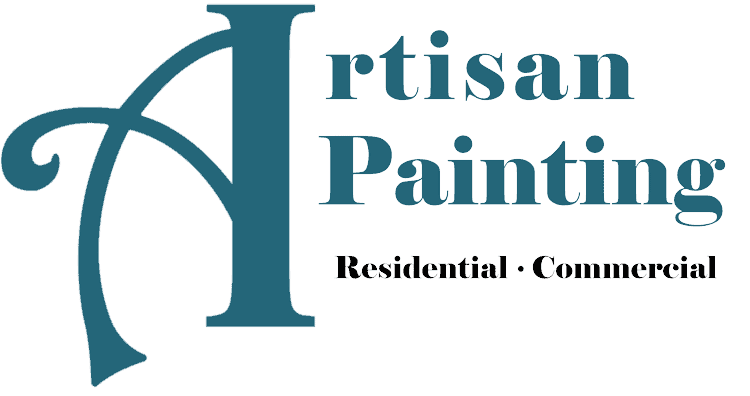In the contemporary business landscape, there is a growing recognition of the pivotal role that sustainability plays in shaping the identity and practices of corporations. This heightened awareness extends beyond day-to-day operations to encompass critical aspects such as the aesthetics and upkeep of commercial spaces. This blog will delve into the compelling reasons behind adopting eco-friendly commercial interior painting techniques, emphasizing the positive impact on the workspace and the broader environment.
Understanding Low-VOC and Zero-VOC Paints
In recent years, a paradigm shift has occurred in the painting industry, with businesses increasingly favoring paints that are low in Volatile Organic Compounds (VOCs) or entirely VOC-free. VOCs are compounds that evaporate into the air, contributing to indoor air pollution and potential health risks. As the cornerstone of eco-friendly painting, low-VOC and zero-VOC paints have gained popularity for their positive impact on the environment and the well-being of occupants.
Low-VOC Paints
Low-VOC paints represent a significant leap forward in environmental responsibility. These paints contain substantially reduced levels of VOCs compared to their traditional counterparts. Opting for low-VOC paints is a strategic choice for businesses that seek to minimize their environmental footprint. Furthermore, low-VOC paints emit fewer harmful fumes during and after application, creating a healthier indoor air quality within commercial spaces.
Zero-VOC Paints
Zero-VOC paints, as the name implies, contain minimal to no volatile organic compounds. These paints are an exceptional option for businesses creating an eco-friendly living and working space. Beyond their environmental benefits, zero-VOC paints are crafted to have a minimal impact on indoor air quality. This makes them particularly suitable for businesses where individuals may have sensitivities to strong odors, fostering a more comfortable and health-conscious environment.
3 Benefits of Eco-Friendly Commercial Interior Painting
1. Enhanced Indoor Air Quality
The quality of indoor air is a crucial consideration for any business that values the well-being and productivity of its employees. Traditional paints release VOCs into the air, resulting in a distinct and often overpowering smell that can linger for days. By embracing low-VOC or zero-VOC paints in commercial interior painting projects, businesses can begin the painting process without compromising the air quality within their commercial spaces.
The improved air quality achieved through these eco-friendly paints contributes to a healthier and more comfortable working environment, directly impacting the overall well-being of occupants.
2. Reduced Environmental Impact
Traditional paints, laden with harmful chemicals and additives, contribute significantly to environmental degradation during manufacturing, application, and disposal. Adopting eco-friendly paints in commercial interior projects represents a conscious effort to minimize the overall environmental impact.
Many environmentally friendly paints are formulated with fewer toxic ingredients; some even incorporate recycled or sustainable materials, reducing the carbon footprint associated with painting. This commitment to environmental responsibility can be a compelling aspect of a business’s corporate identity.
3. Long-Term Durability and Aesthetics
A common misconception surrounding eco-friendly paints is that they may compromise durability and longevity. However, advancements in paint manufacturing have produced high-quality, low-VOC, and zero-VOC paints that rival their traditional counterparts in terms of durability and coverage.
Businesses investing in these eco-friendly paints can rest assured that their commercial spaces will boast a beautifully painted finish that stands the test of time. The longevity and resilience of these paints contribute to a sustainable approach, reducing the frequency of repainting and the associated environmental impact.
Sustainable Practices in Commercial Interior Painting
Beyond the choice of paint, sustainable practices in commercial interior painting encompass a range of considerations that enhance the overall eco-friendliness of the project.
1. Proper Paint Disposal
Sustainability extends beyond applying paint to the responsible disposal of leftover or unused paint. Many communities have specific guidelines for paint disposal to prevent environmental contamination.
Businesses can contribute to environmental responsibility by exploring options such as paint recycling programs or proper disposal facilities. Proper disposal ensures that leftover paint is managed in an eco-friendly manner, aligning with the broader goals of sustainability.
2. Efficient Resource Usage
Professional painting services that prioritize sustainability, such as Artisan Painting, adopt responsible techniques to minimize resource usage. This includes measures to minimize paint waste, utilizing efficient application methods, and implementing eco-friendly cleanup practices.
Businesses seeking to achieve their eco-friendly goals in commercial interior painting can benefit significantly from collaborating with professionals committed to sustainable practices. By doing so, they can ensure that every aspect of the painting process aligns with their environmental values.
Artisan Painting Practices Sustainable Commercial Interior Painting
Adopting environmentally friendly paints and sustainable practices in commercial interior painting is not just a choice; it’s a strategic decision that aligns with a business’s commitment to social responsibility.
If your business is ready to impact both the environment and your commercial space positively, contact Artisan Painting at 912-875-0046 for a free estimate. Let them guide you in creating a sustainable, vibrant, and welcoming interior that reflects your business values and contributes to a greener and healthier future.


